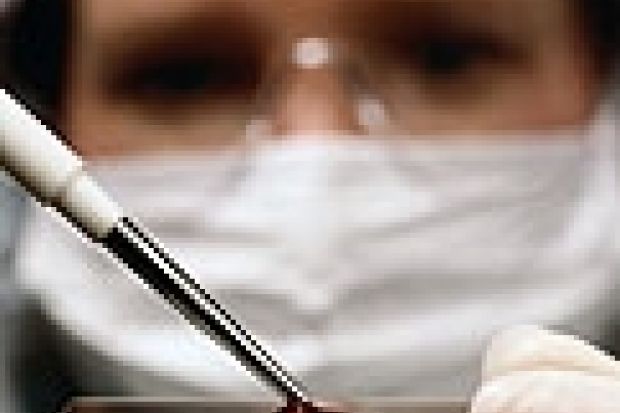Biomedicine is the big attraction at the country's first science park, reports Rebecca Warden.
Spain's first science park is aiming high. "The idea is to make Barcelona the great biomedicine pole of attraction in southern Europe," says Joan Guinovart, director of Barcelona University's new Barcelona Science Park (PCB), which officially opened last week.
Some €48 million (£30 million) has been spent on setting up 12,000 square metres of labs that will house 700 scientists. The aim is to make the park a regional centre of research excellence and provide a flexible space for the kind of university-industry interaction in short supply in Spain.
The jewel in the crown is the Biomedical Research Institute. This favours a multidisciplinary approach, taking in developmental and cellular biology, structural biology and bioinformatics, chemistry and molecular pharmacology and molecular medicine. Its 20 research groups will grow to 30 by 2003 and 40 by 2004.
One of the first scientists to join is developmental biologist Juan Carlos Izpisúa-Belmonte, who is leaving the Salk Institute in the United States to head the cellular and developmental biology programme.
"Europe needs to compete harder with the US, which until now has acted as the motor of biomedicine," he says. "This is the most convincing initiative I have seen in Spanish science to get on board the biomedicine train."
In addition, the science park is home to 30 teams working in fields such as bioethics and law, solar power, climatology and education.
The €18 million-worth of equipment includes a 800MHz spectrometer for protein analysis, the most powerful in southern Europe, which will be used to provide services to business, the university and other institutions. However, the aim is to achieve a much closer relationship with industry, and 12 companies - including Merck, Prous Science, Kymos, Medichem and CyGene - are to set up R&D departments on campus.
"The added value for them will be access to installations they couldn't find elsewhere plus daily contact with cutting-edge research," says Joan Massague, director of cellular biology at New York's Memorial Sloan-Kettering Institute and adviser to the PCB.
As a private foundation, the science park will be able to avoid the rigid employment conditions in Spanish universities, where research opportunities are tied to teaching posts and most lecturers hold lifelong tenure. Instead, full-time researchers will be employed on five-year contracts renewable after external assessment. "We want to get away from the civil-servant model, where everyone earns the same no matter how hard they work," Guinovart says.
Although most of the researchers will be Spanish, the science park intends to attract international talent as its reputation grows. "We will encourage scientists from around the world to come and work in Barcelona," Massague says.
This new initiative should also herald a closer working relationship between Barcelona's universities, two of which are building similar centres. Cooperation will include not only pooling resources and equipment but also joint funding bids. PCB managers have their sights firmly fixed on the European Union's 6th Framework programme, which will reward thematic networks rather than bids by individual institutions.
"Before, it was thought that universities would compete with each other, but this is now an out-of-date concept. Networks are there to help the EU compete with Japan and the US," says Marius Rubiralta, vice-rector of research at Barcelona University.
Poor showing in R&D: the patent truth
Spanish patents make up 0.5 per cent of those used in the European Union, compared with 19.54 per cent for Germany and 7.3 per cent for France.
The number of patents that Spanish universities and the national research council, the CSIC, apply for has increased sharply in recent years. Between them, they account for more than 10 per cent of patent applications in Spain.
When Domingo Represa began work at the CSIC's technology transfer office 12 years ago, Spain's universities held just 40 patents. After years of efforts to encourage them to patent more, they now apply for between 170 and 180 patents a year.
"But the fundamental aim of universities is not to do patents but to do science," Represa says. "Businesses are the ones that should be exploiting this technology."
Spanish industry is often criticised for spending far too little on research and development. In 1998, the private sector spent 0.45 per cent of gross domestic product on R&D, half the amount spent in the United Kingdom. The fact that most Spanish firms are small or medium-sized is seen as a big obstacle to change.
"Investing in innovation is a big effort for a small Spanish company. It is much cheaper to buy a patent than to train people and pay their salary for years. The government must provide the resources for research," says an economist at the Bank of Spain.
Register to continue
Why register?
- Registration is free and only takes a moment
- Once registered, you can read 3 articles a month
- Sign up for our newsletter
Subscribe
Or subscribe for unlimited access to:
- Unlimited access to news, views, insights & reviews
- Digital editions
- Digital access to THE’s university and college rankings analysis
Already registered or a current subscriber? Login
